उत्तर पूर्वी हिमालय क्ष्ोत्रो में दालों के कीट पतंग व उनका प्रबंधन
Insect pests inflict enormous losses to the agricultural production system. Anecdotal evidences also indicates rise in losses, despite increasing use of chemical pesticides. At the same time, there is rising public concern about the potential adverse effect of chemical pesticides on human health, environment and biodiversity. The intensity of these negative externalities though cannot be eliminated altogether, but that could be minimized through IPM techniques.
The North Eastern Hill (NEH) region of India is characterized by inaccessibility, fragility and marginality with rich biodiversity, ethnicity and societal set up. It has wide range of agro-climatic conditions with high rainfall and low productivity. The agro-climatic conditions are very conducive for the growth and multiplication of the insect fauna and their natural enemies and they pose serious problems with resultant low productivity in almost all the crops. Pulses are important food crops due to their high protein and essential amino acid content. Like many leguminous crops, pulses play a key role in crop rotation due to their ability to fix nitrogen. The important pulses grown in the NEH region are pigeon pea, cowpea, rice beans, rajamash, bengal gram, mung bean, urd bean, lentil, faba bean and lathyrus etc.
Due to favorable climatic conditions, pulse crop are infested with number of pests throughout the cropping season. Pigeon pea is infested mainly by pod boring weevil, Apion clavipes, Blister beetle (Myllabris pustulata and M. phalerata) and pod borers (Catechrysops cnejus, Etiella zinkenela and Helicoverpa armigera). Amongst, pod-boring weevil is the major pest of pigeon pea causing upto 100% damage. Field pea is infested by cut worms (Agrotis ipsilon, A. flamerata and Euxoa spinifera), Pea semilooper (Plusia orichalsia), pod borers (Catechrysops cnejus and Etiella zinkenela), aphid (Acyrthosiphon pisum), leaf miner (Phytomyza atricornis), Thrips (Megaleurothrips usitatus), Bihar hairy caterpillar (Spilartia obliqua) and stem fly (Ophiomyia phaseoli). The major pest of cowpea are stem fly, aphid, (Aphis craccivora), pod boring weevil and black bug (Coptosoma cribraria).The other pests like leaf folders (Nacoleia vulgalia and N. diemenalis), semilooper (Trichoplusia ni), jassids, flea beetle (Monolepta signata) and Mylloserous weevil are of minor importance.
MAJOR INSECT PESTS OF PULSES
1. Pod boring weevil: Apion clavipes (Coleoptera: Apionidae)
Apion clavipes is the serious crop pest in this region. They cause 77% damage to the pods and 43% damage to the grains. Early maturing varieties are more susceptible than late maturing ones. As and when flowering starts in pigeon pea the adults start mating and pre-oviposition period is 5-8 days. Eggs are laid singly on the pods, which are hemispherical golden yellow and measure 0.8-0.3mm. On an average, female lays 15 egg per day and peak eggs laying continues for 3-4 days. The black head of the grub is visible on the third day and on the fourth day the eggs hatch. The grub enters into the seeds and starts feeding on the developing grain. Grubs are white and ‘C’ shaped with prominent black head (Fig.1).
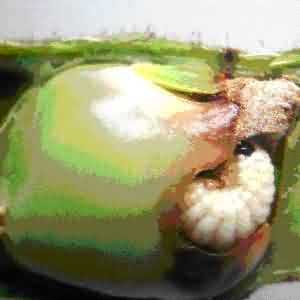
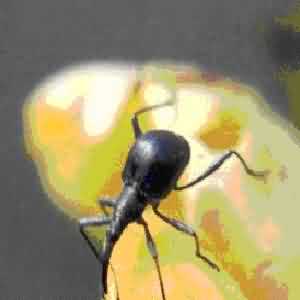
Fig. 1. A. clavipes grub Fig. 2. A. clavipes adult
The whole grain is eaten by the grubs and pupates within the pod. The larval period lasts for 8-10 days and the exarate pupa remains inside the pod. Pupal period lasts for 8 days. The adult emerges by making the hole in the pod (Fig. 2). The males and females are equal in number and adult longevity ranges from 30-40 days. The adults are shiny black weevils with prominent snout having a good ability of flight. Adult also causes damage by feeding the leaves, young shoots and flower buds. On young leaves it makes small holes and nibbling in flower buds, which affects flower opening ultimately leading to poor pod set. The adult weevils are also found feeding on young pods.
2. Pod-sucking bugs:
The common pod sucking bugs found in this region are Clavigralla gibbosa, Clavigralla scutellaris, Anoplocnemis spp., Riptortus spp. (Hemiptera: Coreidae) and Nezara viridula (Hemiptera:Pentatomidae). The main species of pod-sucking bugs of pigeon pea belongs to the genera Clavigralla. The green stinkbug, Nezara viridula is found on many legumes and other hosts throughout the tropics and subtropics.
Clavigralla bugs are brown-gray in colour and C. scutellaris being more robust than that of C. gibbosa. In the field, C. gibbosa and C. scuttelaris are often mistaken for each other. The eggs of the two Clavigralla species however, are easily separated; those of C. scutellaris being smooth and shiny, and not roughly sculptured like the C. gibbosa. C. gibbosa generally lays clusters of 10-12 eggs compared to the 18-20 of C. scutellaris. Nezara viridula is 15 mm long, normally green, but may also have some yellow coloration. The adults of the Anoplocnemis spp. vary in colour from dark brown to black 30 mm, long and are the largest of these bugs. The Riptortus spp are 18 mm long, brown in colour, and more slender than the other species. All of the pod-sucking bugs lay their eggs in clusters on leaves and pods. Most of these species require 4 to 5 weeks to complete one generation. Since, adults live for more than 3 months, all the stages of its life cycle can be simultaneously observed in the field.
The adults and nymphs of all of these bugs use their piercing mouthparts to penetrate the pod wall and suck the liquid from developing seeds. Damaged seeds become shriveled, and develop dark patches. The injury being similar to that of drought stress and the impact of these pests has been underestimated in the past. Seeds damaged by pod- sucking bugs neither germinate nor acceptable as human food.
3. Podfly : Melanagromyza obtusa (Diptera:Agromyzidae)
Melanagromyza obtusa is a widespread and major pest of pigeon pea in Asia. It has a narrow host range and only feeds on pigeonpea and closely related species. The small, black fly is about 5 mm in length. Eggs are laid in the wall of an immature pod. The white maggots feed on the developing seed and reach a length of 3 mm before pupating. The brown puparium is formed between the remnant of the seed and the pod wall. One generation requires 3 to 4 weeks under field condition.
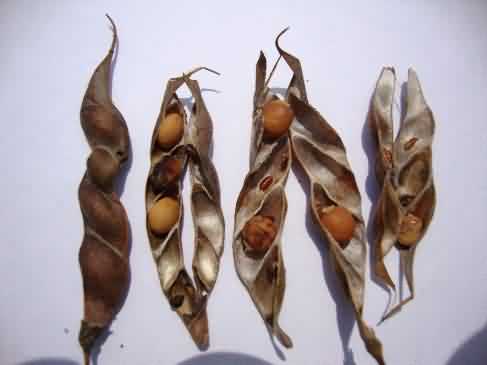
Fig 3 : Pod fly damage
Pod fly infested pods do not show external evidence of damage until the fully-grown larvae chew holes in the pod walls. This hole provides an emergence "window" through which the adults exit the pod. Pod fly damaged seeds will not germinate and are unfit for human consumption (Fig. 3).
4. Plume moth: Exelastis atomosa (Lepidoptera: Pterophoridae)
Adult plume moths measure 10 mm in length, and have fringed wings that are held perpendicular to the body at rest. Eggs are laid singly on buds and pods. The full-grown larva is about 15 mm long, green, and has a spindle-shaped body covered with short spines. Pupation occurs in the foliage and the pupa is similar in looks to the larva, except that it is brown. An egg-to-egg cycle can be accomplished in about 4 weeks. Plume moth caterpillars are more rampant during the post rainy season than during the rainy season. Larvae feed on buds, flowers and pods, resulting in reduced yields.
5. Bean fly: Ophiomyia phaseoli (Diptera: Agromyzidae)
Larva feeds on leaves, stems, and tap roots that lead to wilting and death of affected parts or plants on severe infestation. The eggs are oval, clear, and milky-white in color. These are laid in holes of leaves near the petiole. The maggot is small and white in color with brown head.The pupa is barrel-shaped, yellow with a brownish-tinge and distinctly darker ends. It has well-defined segments with black anterior and posterior breathing organs. It becomes dark-brown before the adult emergence. The adult has metallic-black color about ¼ in size than that of a common housefly.
6. Blue Butterfly: Lampides boeticus (Lepidoptera: Lycaenidae)
The butterflies have upper side violet-blue to brown in colour and underside pale grayish (Fig. 4). Wings are covered with white scale-like hair over the ordinary scaling. The tail is black, tipped with white and wing spread 34-38 mm. Caterpillar are 10 to 13mm long and pale green to violet in colour. Pupae are yellowish-green in colour and without any hair. Larvae feed inside the flower buds and green pods destroying them totally. Eggs are laid singly or in flower buds, green pods, shoot and leaves. A female lays 32-120 eggs during 2-5 days of oviposition. Eggs, larval and pupal duration last 4-7, 9-27 and 7-19 days respectively under the different climatic conditions. It pupates on leaves, twigs or pods.
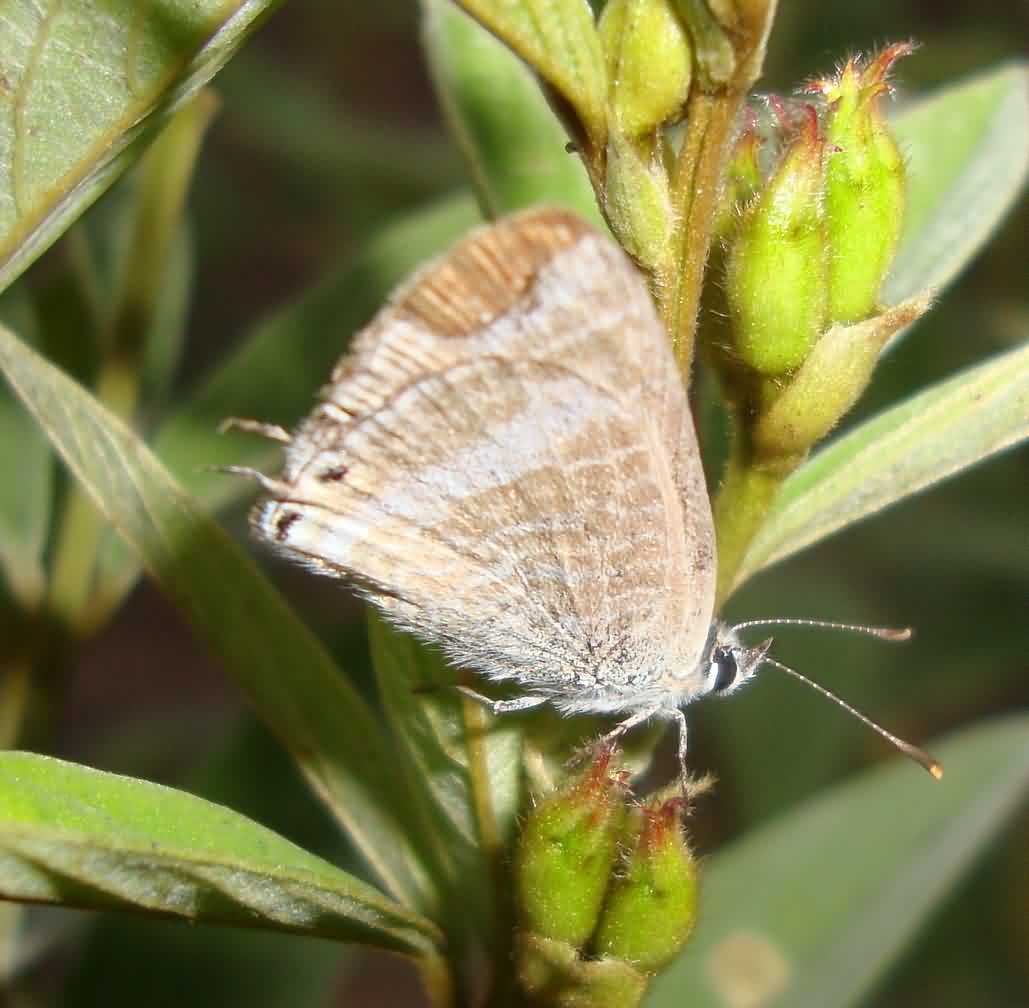
Fig 4. Blue butterfly
7. Aphids: (Hemiptera: Aphididae)
The common aphids found in pulses are Aphis craccivora Koch in pigeonpea and chickpea, Aphis fabae Scopoli, Myzus persicae (Sulzer), Macrosiphum spp. in pigeonpea and Acrythosiphon pisum (Harris), in chickpea. Among these A. craccivora is the most prevalent in NEH region. This species is widely distributed and has a broad host range.
A. craccivora is common in a number of leguminous crops. The adults are black and shiny, up to 2 mm long and some are winged. The nymphs are similar to the adults but smaller. This species can reproduce without mating in Asia creating one generation in a week under optimum conditions. Individual adults can produce about 100 nymphs over a life of up to 30 days. Aphids colonize the young shoots, flowers, and pods of both crops. Young leaves of seedlings become twisted under heavy infestation. Seedlings may wilt, particularly under moisture-stressed conditions. However, a more notable issue in chickpea is stunt disease, caused by the bean leaf-roll virus transmitted by these aphids. Stunt disease limits plant growth, rendering leaflets small and reddish brown (yellow in kabuli types). Scraping the lower part of the stem reveals brown phloem, a characteristic of the disease.
8. Blister beetles: (Coleoptera: Meloidae)
Thecommon species found in the region are Mylabris pustulata Thunberg, Mylabris thunbergii Billberg and Mylabris spp. Mylabris pustulata adults measure about 25 mm in length and have red and black alternating bands on the elytra (Fig. 5). Other species may vary in size but all are brightly colored. Eggs are usually laid in the soil and the diet of the larvae consists of other soil insects particularly grasshoppers. Thus, while the adults may cause considerable damage, the larvae are beneficial. Adult beetles feed on flowers and tender pods, and may have a significant impact on yields, especially of short-duration genotypes.
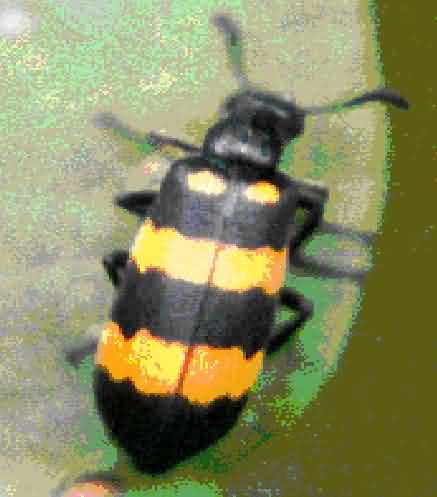
Fig. 5. Blister beetle
9. Mites:
The common mites associated with pigeon pea arered spider mite, Schizotetranychus cajani, Tetranychus spp. (Acarina: Tetranychidae) and eriophyid mite, Aceria cajani (Acarina: Eriophyidae). Both eriophyid and spider mites are generally found on the lower leaf surface. A. cajani, is the vector of the pigeon pea sterility mosaic disease, the most serious viral disease of this crop. Plants infected with sterility mosaic disease develop light green, chlorotic foliage. Leaves have a mosaic pattern and early infection results in reproductively sterile plants. Spider mites cause yellow or white spots on the upper surface of the infested leaflets. Heavy infestation results in bronzing of the leaves, followed by defoliation.
The eriophyid mite is about 0.2 mm long and difficult to see without magnification (10 X or more). They are light-colored, long and spindle-shaped, and deposit their eggs on young foliage. In contrast, spider mites are larger at 0.5 mm, oval-shaped, and dark-colored. Both groups of mites can complete a generation in less than two weeks under optimum conditions. Dispersal is either a direct plant-to-plant or wind-aided.
10. Gram Pod borer: Helicoverpa armigera (Lepidoptera: Noctuidae)
Adult H. armigera has wings of about 40 mm with dull brown forewings. A single female can lay up to 2000 small white eggs usually singly. In pigeon pea, eggs are laid on flower buds and young pods while in Chickpea eggs are usually deposited on foliage. Full-grown larvae are 30 to 40 mm long and may have various body color and banding patterns. Pupation occurs in the soil or in plant debris. One generation takes 4 weeks under favorable conditions. The Helicoverpa spp. destroys buds, flowers, and pods on both crops. If flowers and pods are not available, larvae will feed upon foliage. Foliar damage is more common in chickpea than in pigeon pea. Larvae prefer to feed on the protein-rich seeds within the pods.
11. Legume (or Cowpea) Pod borer: Maruca vitrata (Lepidoptera: Pyralidae)
Adults have distinctive white bands on brown forewings with a wingspan of 20 mm. Eggs are laid in small clusters of 10 to 15 on leaves, buds, and flowers. A full-grown larva measures 15mm in length, with a pale body lined by rows of conspicuous black spots on its dorsal surface. The spots may be absent or obscure at the prepupal stage. Pupation takes place in the web or on the soil surface in a silk cocoon. Under optimum conditions, a complete life cycle takes 3 weeks. M. vitrata becomes a menace in early-season pigeon pea especially in areas with high relative humidity. Larvae feed from inside a webbed mass of leaves, buds, and pods. This behavior makes Maruca a foliage feeder and pod borer
12. Lima bean pod borer: Etiella zinckenella (Lepidoptera: Pyralidae)
Adults of the lima bean pod borer, Etiella zinckenellaare small, brown moths with a wingspan of about 20 mm. Eggs are laid in clusters of 2-12 on fully mature pods. The young larvae are green, but become pinkish red, as they get older. Larvae feed inside the pod, reaching a maximum length of 15 mm. Pupation takes place in the soil. One generation requires 4 weeks under favorable conditions. Larvae are generally found infesting maturing and dried pods. Population builds up by the end of the season, when the temperature is high. The presence of dry, light-colored frass granules, and webbing in the pod is an indication of Etiella infestation.
13. Lepidopteran defoliators:
Lepidopteran leaf feeders ofminor importance are Amsacta albistriga Walker (Fig. 6), A. morri Butler, Spilosoma (Spilartia) obliqua (Walker), (Lepidoptera: Arctiidae), Euproctis subnotata (Scintillus), (Lepidoptera:Lymantriidae) and leaf webber Grapholita (Cydia) critica ( Lepidoptera: Tortricidae)
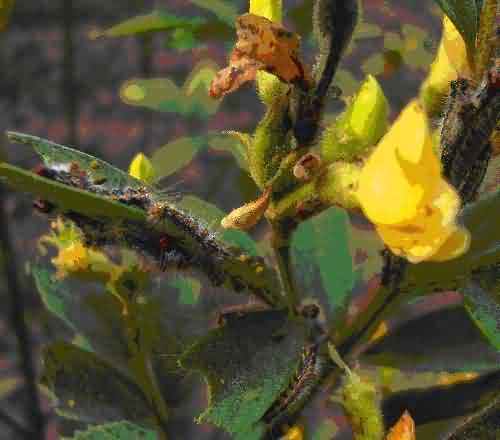
Fig 6. Hairy caterpillars
Other minor pests:
Both nymph and adult of whiteflies, Bemisia tabaci (Homoptera:Aleyrodidae) suck the sap from the leaves, causes the weakening and early wilting, yellowing, drying, premature dropping of leaves that result in plant death. Leaflets damaged by jassids are cup-shaped and have yellow edges and tips. Seedlings that have sustained considerable feeding by jassids may be stunted and have red-brown leaflets followed by defoliation.
MANAGEMENT OF INSECT PESTS OF PULSES:
Cultural control practices:
- Sanitation and keep the plant healthy.
- Deep ploughing in summer to eliminate the resting and immature stages of pests.
- Proper agronomic practices should be followed
- Early maturing varieties like ICP 7219, 7483, 7485 and 7487 are recommended for the region, to evade infestation of weevils.
Biological control:
- Diversified environment of NEH region made the biological control as a one of the most important tool in pest management
- Conservation of natural enemies in the field, viz. coccinellid beetles, syrphid flies and other hymenopteran parasitoids and predators.
- Three hymenopteran (one egg and two larval) parasitoids are recorded on A. clavipes. The Eulophid larval parasitoid lays eggs on the grub by piercing ovipositor through the pod and/or from entry hole of the grub. The adult parasitoid emerges on the eighth day of parasitization.
- Chalcid wasp, Diaretiella repae is an effective parasitoid on pea aphid. These wasps are quite small, metallic blue or green in colour.
- Entomogenous fungus Beaveria bassiana can be effectively used for the management of adult weevils. Spray of B. bassiana @ 109 spore/ml is effective in controlling pod boring weevil within 3-4 days after treatment (Fig. 7). Pea aphid fungus, Erinium neoaphidis can also be used to control aphids

Fig 7. Beaveria bassiana fungus grown on A. clavipes
- Application of entomopathogenic fungi viz. Beaveria bassiana @ 109 spore/ml and Aspergilllus flavus controls the blister beetles from August to October.
- NSKE 5 % is recommended for controlling pod borers in pulses.
- Most important predators found in pulse ecosystem of NEH region includes different species of coccinellid beetles, viz., Cheilomenes sexmaculata (Fabricius), Coccinella transversalis Fabricius, Coccinella undecimpunctata, Cryptogonus orbiculus (Gyllenhal) var. antica (Walker), Micraspis discolor (Fabricius) complex, Hormonia diamidiata (Fabricius), Oenopia kirbyi Mulsant, and Oenopia sexareata (Mulsant) etc. These beetles feed on soft bodied insects like aphids, jassids and sometimes on the small lepidopteran larvae also. All these predators have excellent natural biological control potential.
Chemical control:
Need based application of pesticides is essential.
- Imidacloprid 17.8 SL @ 0.5 ml/l was highly effective in controlling the aphids to the extent of 95%, followed by dimethoate, achook, nimbicidine, karanjin, neem oil and anonin over control
- Two spray one at initiation of flowering and the other at one month after the first spray, of deltamethrin @ 0.005%, or carbosulfan 25 DS @ 0.025% or monocrotophos 36 SL @ 0.075 % control the weevil and other pests effectively.
- Application of carbofuran 3G @ 0.5% kg a.i./ha at the time of sowing controls the stem fly and the other sucking pests.
- Spraying with malathion 0.05 % or fenvalerate 0.01 % is effective in managing the pea pests.
- Application of carbofuran 3G @ 0.5% kg a.i./ha as soil incorporation reduce the pests at vegetative stage
- Need based spraying of endosulfan 0.07 % or monocrotophos 36 SL @ 0.05 % reduce the pest population at flowering and pod formation stage.
Authors:
N. S. Azad Thakur1 and D. M. Firake2
1Principal Scientist & Head and 2Scientist
Division of Crop Improvement (Entomology)
ICAR Research Complex for NEH region, Umiam, Meghalaya (India)
Email:
